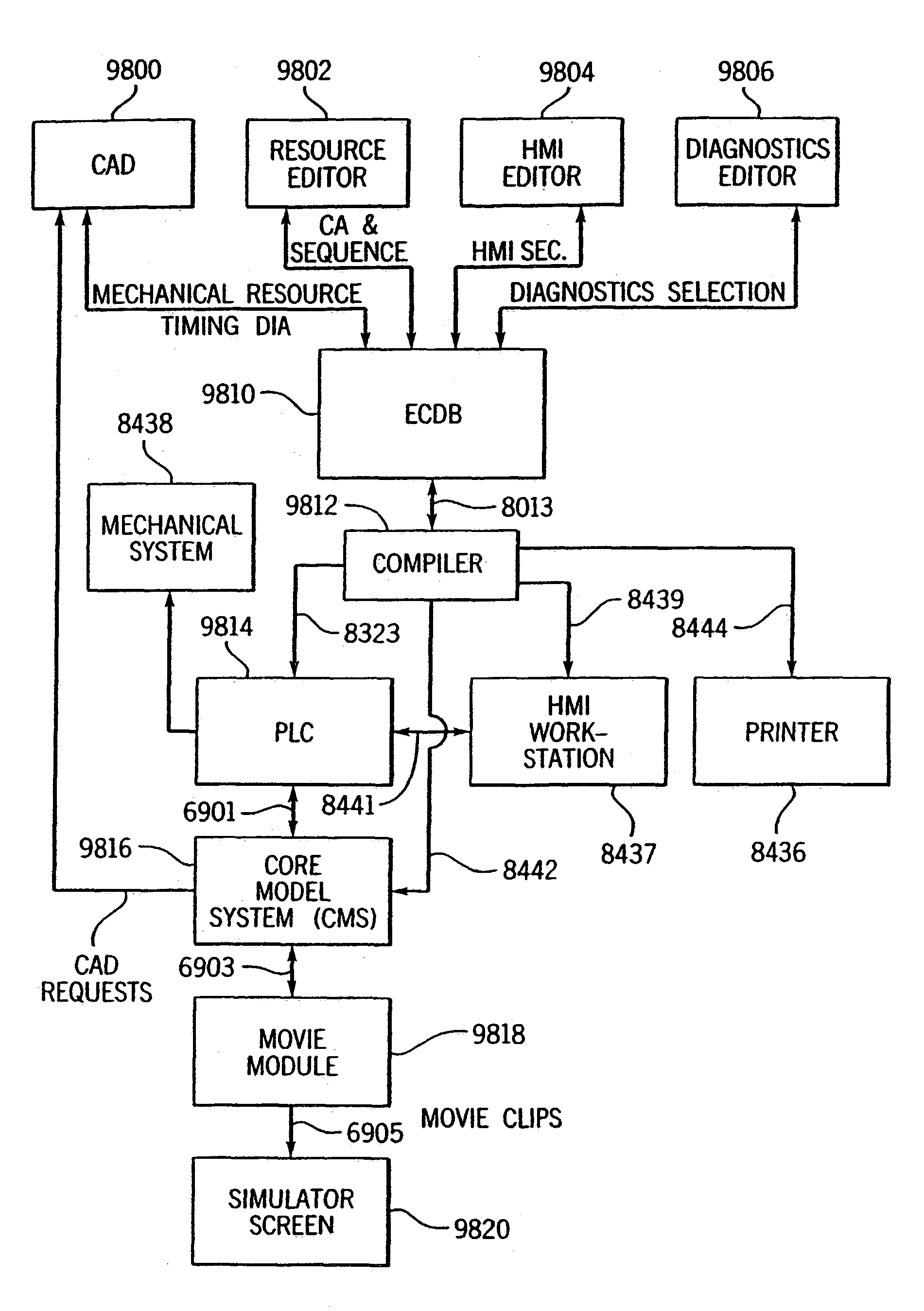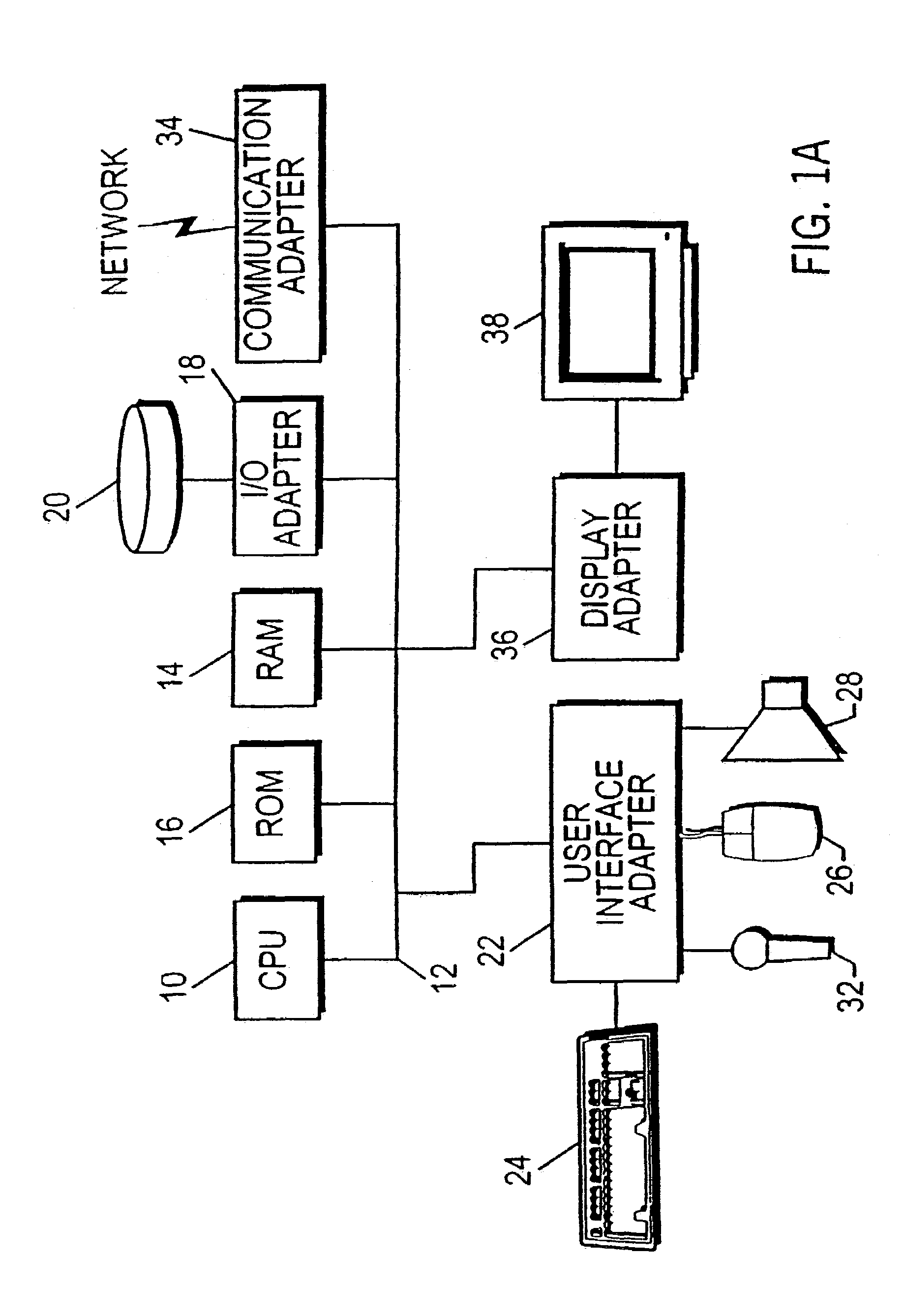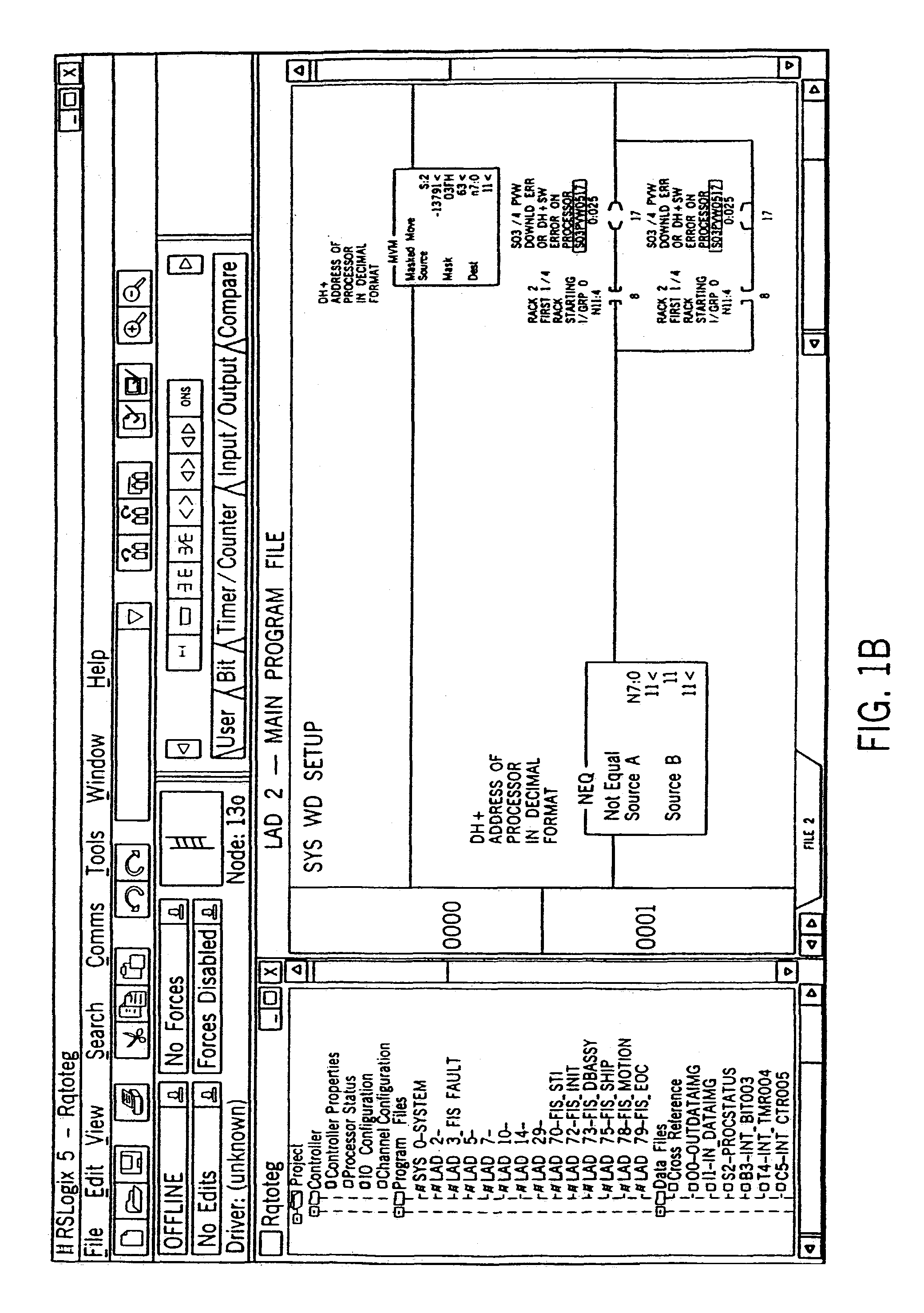Simulation method and apparatus for use in enterprise controls
a control and simulation method technology, applied in the field of computer systems, can solve the problems of requiring complex control systems, affecting the development process, and requiring tedious steps in the automated manufacturing process, and achieve the effects of facilitating realistic simulation, facilitating modification of circumstantial characteristics, and reducing the number of cas required to support design choices
- Summary
- Abstract
- Description
- Claims
- Application Information
AI Technical Summary
Benefits of technology
Problems solved by technology
Method used
Image
Examples
second embodiment
[0574]According to the inventive simulation aspect, simulation information required for realistic simulation is divided into first and second information sets including “control characteristics” and the combination of both “circumstantial characteristics” and third entity characteristics. Control characteristics are characteristics which, after CA parameterization, are identical for resources corresponding to the CA and are independent of other circumstantial considerations which affect request execution. For example, in the case of a SafeBulkHeadClampSet CA, control characteristics include the devices specified in the CA, resource requests and corresponding I / O combinations and feedback events and corresponding I / O combinations. From a controls perspective all of these characteristics of resources corresponding to a CA are identical.
[0575]Circumstantial characteristics, as the name implies, are characteristics which may vary for a given CA resource and which affect request executio...
first embodiment
[0724]According to the invention, a system and method for developing diagnostic rules for diagnosing the behavior of a machine is provided. The system and method include a plurality of control elements which cooperate to perform at least one discrete event process and which are configured to transition between at least two different states. Each state transition represents a discrete event in the process, and the occurrence of each discrete event is communicated to a main controller. The main controller is configured to detect a timing pattern in the occurrence of the discrete events, which includes a trigger event, a result event, and a time interval between the trigger and result events. A diagnostic rule is then defined based on a statistical analysis of repetitions of the timing pattern. The diagnostic rule is then updated in real time based on a detected change in the timing pattern.
[0725]According to one aspect of the invention, the statistical analysis includes calculating a ...
PUM
 Login to View More
Login to View More Abstract
Description
Claims
Application Information
 Login to View More
Login to View More - R&D
- Intellectual Property
- Life Sciences
- Materials
- Tech Scout
- Unparalleled Data Quality
- Higher Quality Content
- 60% Fewer Hallucinations
Browse by: Latest US Patents, China's latest patents, Technical Efficacy Thesaurus, Application Domain, Technology Topic, Popular Technical Reports.
© 2025 PatSnap. All rights reserved.Legal|Privacy policy|Modern Slavery Act Transparency Statement|Sitemap|About US| Contact US: help@patsnap.com



